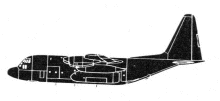Incident Overview

Description
On the third day of flying operations in Papua New Guinea, the crew of the Darwin-based Twin Otter were conducting a flight from Madang and return via a number of airstrips in the central highlands. When haze and cloud prevented them flying the flight-planned direct track between the Koinambe and Simbai airstrips, they decided to fly north-west via the Jimi River valley and one of its tributaries. Two of the trainees were occupying the cockpit seats, one as flying pilot and the other as navigating pilot using a 1:1,000,000-scale chart. When the crew turned the aircraft to follow a tributary off the Jimi River, the training pilot was in the aircraft cabin. A few minutes later, their discussion regarding the progress of the flight attracted the attention of the training pilot. By this time, however, the position of the aircraft in the valley, and its available performance, were such that an escape from the valley was not possible. The aircraft collided with trees before impacting steeply sloping ground. SIGNIFICANT FACTORS: 1. There had been a significant loss of corporate knowledge, experience and risk appreciation within the Army concerning the operation of Twin Otter type aircraft in tropical mountainous areas. 2. No training needs analysis for the exercise had been conducted. 3. The tasking and briefing of the training pilot were incomplete. 4. The training pilot did not adequately assess the skill development needs of the trainees. 5. The supervision of the flight by the training pilot was inadequate. 6. The scale of chart used by the crew was not appropriate for the route they intended to fly.
Primary Cause
Lack of corporate knowledge, experience, and risk appreciation within the Army concerning the operation of Twin Otter aircraft in tropical mountainous areas, incomplete training needs analysis, inadequate supervision of the flight, and an inappropriate chart scale.Lack of corporate knowledge, experience, and risk appreciation within the Army concerning the operation of Twin Otter aircraft in tropical mountainous areas, incomplete training needs analysis, inadequate supervision of the flight, and an inappropriate chart scale.Share on:



